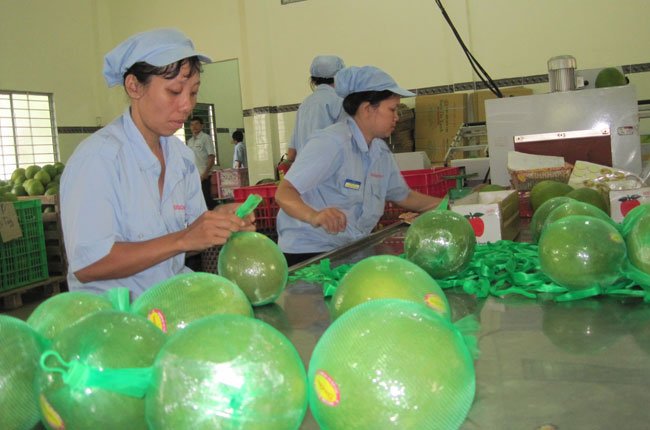Agricultures, Foods, News & Event
Vietnamese pomelos on the journey to conquer new markets
In the coming time, Vietnamese pomelos will be sold in Japanese supermarkets. This is a positive signal when one more Vietnamese fruit is exported to the high-end market. However, the challenges for Vietnamese agricultural products are not only the story of market expansion but also the increasing demands from new markets.
In the past years, not only the Ministry of Agriculture and Rural Development (MARD) but also the Ministry of Industry and Trade, trade counselors, and embassies of Vietnam and other countries have all sought ways to continue their efforts. market for local agricultural products. During his business trip to Japan to attend the summit of the group of industrialized countries (G7), Prime Minister Pham Minh Chinh also discussed opportunities for Japan to soon open the door to Vietnam’s pomelos to the market. this school. In fact, not now but many years ago, the Ministry of Agriculture and Rural Development has had activities with relevant parties to bring pomelos to Japan soon.

Vietnam and Japan signed the Vietnam-Japan Economic Partnership Agreement (VJEPA) effective from October 1, 2009, and the ASEAN-Japan Comprehensive Economic Partnership Agreement (AJCEP), creating an opportunities for goods of both sides through the reduction of tax rates. Vietnamese agricultural products, in addition to the opportunity to enjoy tariff preferences under the provisions of the two agreements mentioned above, also face challenges in terms of disease control requirements and product quality.
Currently, Vietnamese pomelos are allowed to be sold in Canada, and in the near future will be Japan and the US. A business that used to export pomelo to Canada in 2020 shared that after a few shipments had to stop, because of difficulties in product consumption. This enterprise exports pomelo and dragon fruit together with the same shipment by sea. Due to the prolonged transportation time, the quality of dragon fruit declines, the goods are difficult to sell, affecting the business of export products accompanied by pomelos, so the business has to stop both items.
One of the other difficulties is the control of chemical residues. Due to the scale of Vietnam’s pomelo cultivation in the form of households, small area and each gardener has a different way of caring, pesticide residues in fruits are also different, making it difficult to control.
In Japan, the Vietnamese community has about 500,000 people, which is the second largest expat community in the country of cherry blossoms. Therefore, when exporting pomelos here, they can take advantage of sales opportunities for the Vietnamese community.
Conditions for exporting pomelo to the US: First, the pomelo growing area and soy fruit processing facility must register with the Plant Protection Department and the US Animal and Plant Health Quarantine (APHIS). Exported fruits must not be infected with phytosanitary objects of interest to the US such as fruit flies Bactrocera dorsalis, Zeugodacus cucurbitae, fruit borer Prays endocarpa, and other fungi such as Cylindrocarpon lichenicola, Phyllosticta citriasiana. Fruit must be irradiated before export. At the stage of packing at the factory, the exporter must remove the fallen fruit, the unqualified fruit. The peel of the grapefruit must be cleaned, treated with fungi and covered with wax.
Conditions for exporting pomelos to Canada: According to the Canadian Food Inspection Agency (CFIA), pomelos imported into Canada must meet the conditions of being free from pests and diseases, must be properly packaged to prevent stamping or spoilage in the first place. shipping process. Fruits must have a phytosanitary certificate issued by a competent authority. The CFIA also has specific requirements for labeling fruit imported into Canada. Accordingly, the label must include information such as product name (grapefruit), country of origin, net weight, name and address of the importer.

